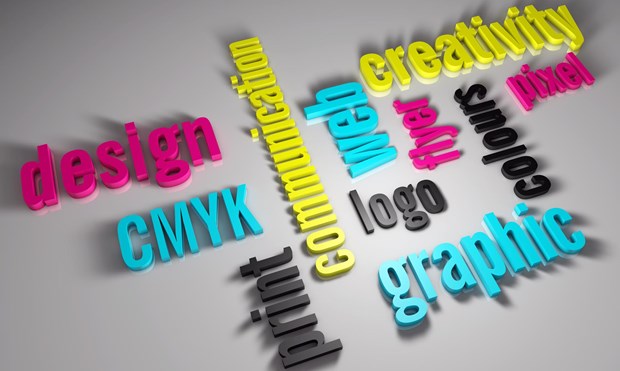Fundamental Elements & Principles of Graphic Design and How to Apply Them
Graphic design plays a significant role in brand-building of any domain like a commercial, educational, political, or cultural. It is also the reflection of your skill-set that lets you express and communicate an effective message through your creative designs may it be the design of logos, websites, brochures, posters, newsletters, signs, and other visual communication kinds. Though it seems easier while we look at a design, there are lots of elements and principles involved to get the perfect and professional design version. It is because of this that the graphic designers can pull it off amongst common individuals in creating attractive and polished-looking designs consistently.
It’s important to understand the basic elements and principles of graphic design to generate effective designs while developing a brand. Having a strong foundation in the design elements and principles will help you bolster your content creation skills and also enhance your ability to communicate your preferences. Here, we help you out with the list of some basic graphic design elements and principles.
Basic Elements of Graphic Design
The basic elements of Graphic design are important to make effective designs and which you need to be aware of includes the color, the shape, the texture, the size, and the value. Deep-dive to know why they are important and how they are used in creating designs professionally.
Color
The color is the most important and primary element in creating a design as it causes the visual impact of a thing at the first or single glance. Being a master in using colors will help you create a stunning and attractive design that has an impact on the targeted audience. Though it is unfeasible to learn all of them, knowing how hue, shade, saturation, tone, and tint work is important to create effective and pleasing designs. In short, color is a valuable tool for graphic designers to make attractive color combinations.
Line
The line is another basic element important in creating designs. The different kinds of lines include straight, curved, thin, thick, solid, and non-solid. The line is present in every design and is primarily used to connect two endpoints or separate sections of graphic design to make the audience focus on the key element.
Shape
The shapes are the next important and most-used element in creating a design. When the lines are combined in different forms, they constitute a shape. The shapes are basic geometric symbols like circles, squares, rectangles, triangles, or any other abstract forms and they form the icons, symbols, and dingbats in a design. Shapes are most often used as boxes and borders by the graphic designers on design and solid shapes for decorative purposes. The shape makes a design more interesting and enticing.
Texture
The texture has become more popular in recent days to focus the attention of the audience on the design element. Using textures creates a strong visual impact and can change the look of a site or print. Graphic designers use the texture as an addition to images, words, or other elements in the graphic. It is a significant graphic design technique to attract the audience and create a visual feel by improving the appearance of a design. The common texture styles include stone, paper, brick, concrete, fabric, and natural elements. The texture mostly serves as a background and enhances the overall appearance of a design.
Size
The size in a graphic design largely impacts and draws the viewer’s attention first. The size of an element indicates the importance of design and the most important information on the page is usually large. Simply put, the larger the size of a design is, the more significant the information is and it ultimately draws the attention of people.
Value
The value of a design depicts how light or dark it looks to the audience. It draws viewers’ attention when the alight object is placed against a dark background and creates emphasis and contrast.
Principles of the Graphic Design
There are many concepts involved in Graphic Design principles like Balance, Dominance, Contrast, Harmony, Repetition, Typography, Rules, Alignment, Visual Hierarchy, and a few others. Here, we help you out with some essential ones.
The following basic design principles will help you create stunning graphic designs.
Balance
The stability and structure of the design are based on a good balance. Balance is important to create good graphics and the perfect visual balance is mostly achieved by using symmetrical, asymmetrical, and radial symmetry.
- Symmetrical Balance: Both sides of a page layout are uniform in the same weight, shape, line, and other design elements
- Asymmetrical Balance: This usually occurs when the two sides of a page or site aren’t the same but have similar elements.
- Radial Symmetry: This denotes when elements are placed in a circular pattern. Radial symmetry is more popular in print layouts than on websites.
Sometimes, a graphic designer intentionally creates an unbalanced design to focus the viewers’ attention on a single element. However, one needs to know the rules for unbalanced designs to work effectively.
Alignment
Alignment is how the elements of a design are lined up along the top, bottom, sides, or center of the element. The aligned elements need not necessarily have to be of the same type or kind. Frequently, the alignment is done along the left edge of the layout. Different-sized photos are the outcome of alignment across the top or the bottom of a unit.
Repetition
As it is implied, repetition denotes replicating the characteristics of similar type elements. This is usually done by professional graphic designers to contribute the design consistency. Repetition is said to create rhythm in a design which could be a series of elements with the same color, size, and type and finally appear as a complete unit.
Proximity
This basic principle maintains a relationship between things that go together. Proximity defines that the elements should be connected visually though they aren’t positioned closely together.
Contrast
Contrast is the contiguity of opposing elements such as small Vs big, dark Vs light, etc. It is used to highlight the important elements of design and is easily achieved with color. Contrast can also occur with type, texture, and graphic elements.
Space
Space is another important principle and a part of a graphic design that is left blank. Negative space is deliberately placed in the design and the margins and gutters between other elements are referred to as the passive space. Space adds emphasis to design and is vital to concentrate on the key element and enables the viewers to read easily.
Final Thoughts
These basic elements and principles of graphic design are vital for unique and impressive designs. Creating a design isn’t a piece of cake unless you know the fundamentals. If you intend to become a graphic designer, sign up with Sulekha that provides a comprehensive list of graphic design courses, classes, and training institutes near you.


















Post a Comment